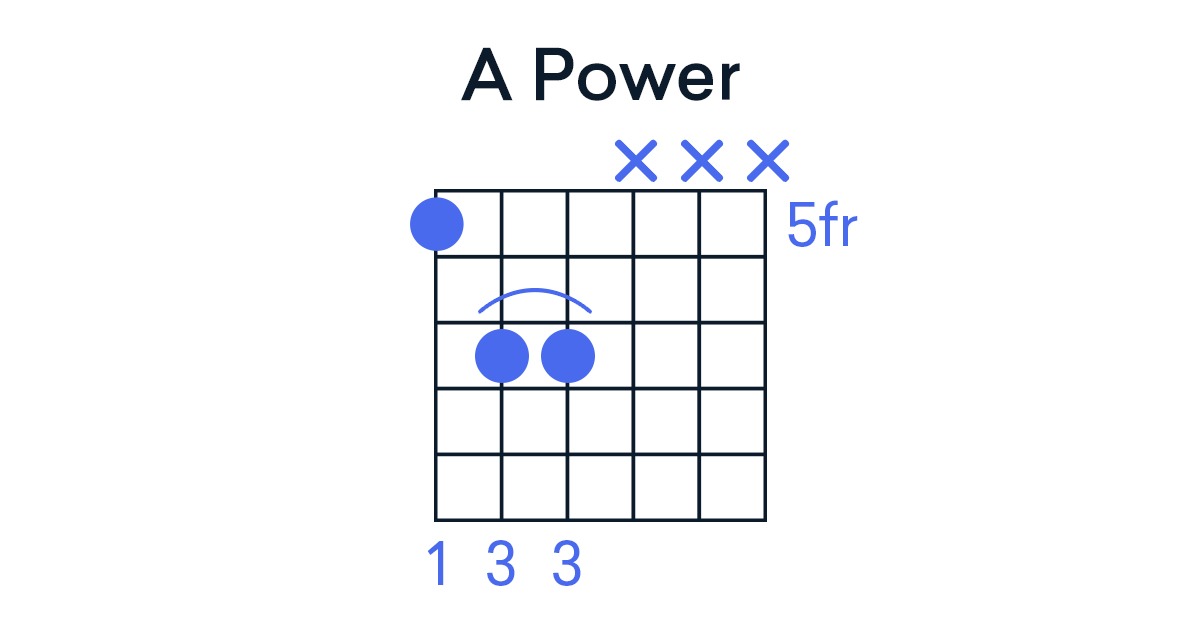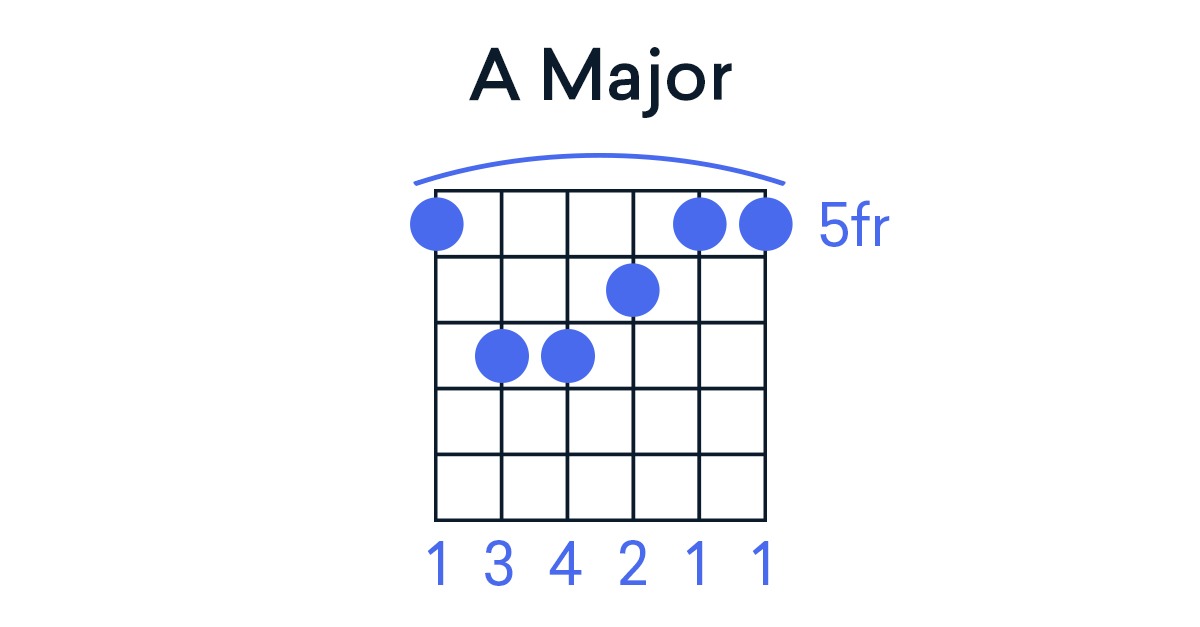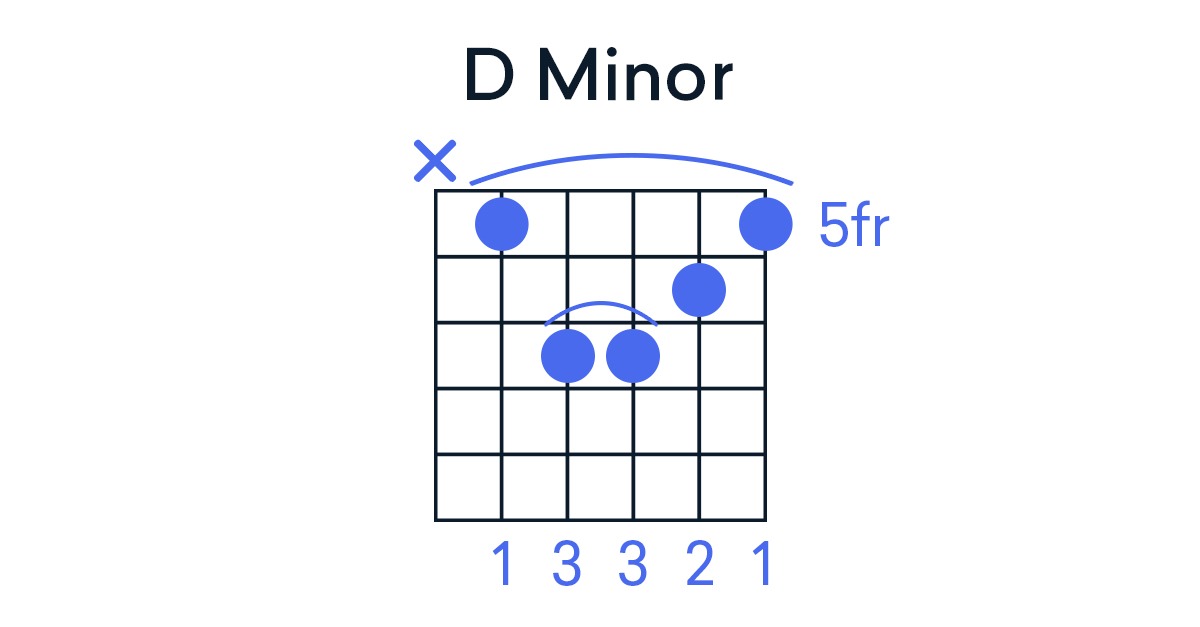Power chords are maybe the most iconic chords in modern rock and pop music—especially when it comes to anything related to punk and heavy music.
It’s probably the first bar chord you’ll learn on the guitar because it’s super easy to play, it sounds good and you can use it anywhere on the guitar neck.
In this article, we’re going to learn everything you need to know about power chords.
Don’t worry, we’ll keep the music theory part simple and make it super clear how you can use them in interesting ways.
By the end, you’ll know what notes a power chord uses, how to play them on piano and guitar and how they’re used in music.
Let’s dive in!
What is a power chord?
Power chords are chords that use two notes—the root and the fifth, and then usually an extra note one octave above the root.
For example, a C power chord would comprise the notes C, G and then C an octave above.
Note that power chords are neither major or minor—since they don’t contain the all-important minor or major third interval which is what gives a chord a major or minor quality.
Because of this indeterminate quality, power chords can be anywhere within any of the scale degrees of a song’s key and still sound good.
Pop-punk bands like Green Day and Blink-182 do this quite often to follow or complement a melody.
Why are power chords so… powerful?
The easy answer is because they rely so heavily on the perfect fifth and octave interval.
The perfect fifth is known as the most harmonically satisfying interval. There’s lots of science behind why the pitch ratio between the root and the fifth are so closely related.
But essentially, the pitch ratio between the perfect fifth makes it the most stable sounding interval other than the octave (the other interval in a power chord).
So, because a power chord uses only the octave and perfect fifth intervals it makes for an incredibly stable and powerful chord.
Just don’t tell a theory expert that you think the power chord is the best chord… since in music theory all chords technically contain at least three notes and the power chord only contains two.
In fairness to theory experts, the power chord really is just a perfect fifth interval supported by an extra octave above the root on top.
And while the power chord sounds good, it’s not very complex, there’s so many chords out there that have much more interesting harmonic qualities out there
But in rock n’ roll there’s no rules and the power chord just sounds big and chunky, especially when played through a heavily distorted guitar.
So let’s look at how the chord is played and used in rock and pop music.
How to play a power chord on guitar
If you know the CAGED system, the best way to play a power chord on guitar is by using an E-style bar chord.
Here’s how an A power chord, played using an E style bar chord looks on a fingering chart.

Notice how only the bottom three strings are played—A the root note on the lowest first string, E the fifth note on the second string and then A an octave higher on the third string.
The other most common power chord on the guitar is played using an A-style bar chord under the CAGED system.
Here’s how a D power chord, played using an A style bar chord looks on a fingering chart and guitar tab.

In this case, the lowest string is not played, the second string plays the root, the third string plays the fifth and the fourth string plays the root an octave higher.
Remember, to play a proper power chord you must remember to mute the strings that don’t belong to the root or fifth parts of the chord.
How to play a power chord on piano
Playing a power chord on the piano is even easier than playing one on guitar since all the notes are right there and you don’t have to worry about muting or barring anything.
All you have to do is find the root and fifth note on the keyboard and then play an octave above the root note.
Here’s how an A power chord looks and sounds on a keyboard.
How to use power chords in music
Power chords don’t have a major or minor quality—so you don’t necessarily have to worry about where you’re playing when playing in a certain key.
Really, you just have to make sure you’re only playing power chords on notes that actually belong to whatever key you’re playing in.
Here’s the diatonic major and minor chord values for the major scale.

And here’s the diatonic chord values for the minor scale.

Unlike major and minor chords which can only be played on the respective minor and major degrees of a major or minor diatonic scale—power chords have no major or minor value.
That’s why they’ll fit everywhere and it’s why punk outfits like using them to mirror the melody and make interesting chord progressions that don’t follow a 1-4-5 pattern.
Even if power chords will always sound great on one, four, or five chords.
That’s all to say, don’t be afraid to use them anywhere in a chord progression—as long as it sounds right to you!
Power chord case study
Let’s look at a band that is one of the greatest of all time when it comes to using power chords—Blink-182.
In What’s My Age Again the Tom Delonge’s guitar part starts off with a fairly challenging alternate picking riff before launching into some huge chords.
I’ll encourage you to learn the sweep picking riff, since it’s such a great hand-eye challenge, but let’s look a little more closely at what Tom is doing with the power chords after that riff.
The song is played in F# Major, so it makes sense that the first chord is found on F#.
Here’s how the first riff goes—F# on the one, C# on the five, D# on the six, B on the fourth and then back to the start of the riff again.
Here’s what it looks and sounds like using a guitar tab.
Notice how Tom plays the same power chords everywhere within the F# major scale even if the root, fourth and fifth are major scale degrees while the sixth degree is minor.
It’s a great example of how they can fit anywhere in a chord progression as long as it’s in key.
Enjoying this theory lesson? Subscribe to our newsletter and get theory lessons, free plugins and more mailed to you every week!
Three ways to make power chords more interesting
Alright, power chords are easy. They’re really useful, but if they’re the only chords you learn you might get bored of them.
Luckily, once you have the hand strength to play a bar chord on guitar you’ve got a lot of options to extend into more complex chords.
Here’s a few ways you can make your chords more interesting.
1. Play diatonic major and minor chords
If you learn your diatonic chord scale, you’ll know when and where to play a minor or major chord.
Here’s what the fingering for an A major chord looks like.

And here’s the fingering for an A minor chord.

Building on the D power chord, here’s how a barred D major chord looks.

And here’s what a barred D minor chord looks like.

This is probably the easiest way of adding a bit more emotion to chord progressions and it’s a great start for adding more complex intervals to your chords.
2. Add a major seventh or ninth extension
Instead of playing the high octave note in the power chord, you could instead play a major seven or ninth note.
This is a great way to make your chords sound “emo”, all the emo and pop-punk bands use the major seventh and major ninth when they want to add some emotional crunchy-ness.
Here’s what a simplified A major ninth looks like using the E style bar chord on the E string.

Here’s what a simplified D major seven looks like using the A style bar chord on the A string.

3. Play the fifth as the bottom note in your power chord
Here’s a trick that a lot of metal guitar players use to make their power chords sound dark and chunky.
Whenever you play an A-style bar chord on the A string, bring your finger up one string and play the E string to add another fifth note as the bottom note.
Here’s how a D power chord with an extra fifth on the E string looks like.

Bach is rolling over in his grave
Power chords are easy to play, they sound great and they break every rule in music theory—Bach would have hated all those parallel fifths.
No wonder punks love using them!
So if you’re just getting started, or if you want to write a song with attitude and grit, never be afraid to turn to the almighty power chord.